-
 Bitcoin
Bitcoin $117700
-1.00% -
 Ethereum
Ethereum $4458
-3.91% -
 XRP
XRP $3.119
0.14% -
 Tether USDt
Tether USDt $1.001
-0.02% -
 BNB
BNB $836.6
-1.56% -
 Solana
Solana $189.5
-3.90% -
 USDC
USDC $0.9998
-0.02% -
 Dogecoin
Dogecoin $0.2335
1.29% -
 Cardano
Cardano $0.9642
1.51% -
 TRON
TRON $0.3539
-1.19% -
 Hyperliquid
Hyperliquid $47.41
-1.84% -
 Chainlink
Chainlink $21.92
-3.28% -
 Stellar
Stellar $0.4286
-0.23% -
 Sui
Sui $3.724
-3.29% -
 Bitcoin Cash
Bitcoin Cash $594.8
-0.78% -
 Ethena USDe
Ethena USDe $1.001
0.04% -
 Hedera
Hedera $0.2501
-2.06% -
 Avalanche
Avalanche $23.96
-4.87% -
 Litecoin
Litecoin $119.0
-2.32% -
 Toncoin
Toncoin $3.473
0.82% -
 UNUS SED LEO
UNUS SED LEO $9.596
0.17% -
 Shiba Inu
Shiba Inu $0.00001301
-0.39% -
 Uniswap
Uniswap $11.03
-0.25% -
 Polkadot
Polkadot $3.935
-2.62% -
 Dai
Dai $1.000
0.01% -
 Bitget Token
Bitget Token $4.564
-1.76% -
 Cronos
Cronos $0.1512
-4.11% -
 Ethena
Ethena $0.7306
-1.09% -
 Pepe
Pepe $0.00001087
-2.68% -
 Aave
Aave $300.2
-4.00%
How to use the mnemonic import function of Binance Wallet?
Binance Wallet's mnemonic import function lets you recover your crypto using your 12-24 word seed phrase, crucial if you lose access. Prioritize security: only import on trusted devices, never share your phrase, and double-check each word.
Mar 25, 2025 at 06:43 pm
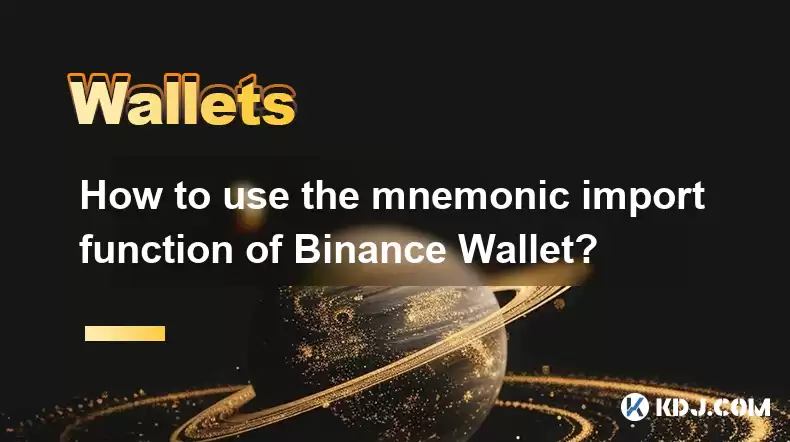
Key Points:
- Binance Wallet's mnemonic import function allows restoring access to your cryptocurrency holdings using your 12-24 word seed phrase.
- The process is crucial for recovering access if you lose your private keys or your device is compromised.
- Security is paramount; only import your mnemonic phrase on trusted devices and platforms. Never share your mnemonic phrase with anyone.
- The exact steps may vary slightly depending on the device and version of the Binance Wallet app.
How to Use the Mnemonic Import Function of Binance Wallet?
Binance Wallet offers a mnemonic import function as a crucial recovery mechanism for users who have lost access to their accounts. This function utilizes your seed phrase – a set of 12 to 24 words – to restore your wallet and its associated cryptocurrencies. Remember, your mnemonic phrase is the ultimate key to your funds; safeguarding it is paramount.
The process begins by launching the Binance Wallet application on your chosen device (mobile or desktop). Ensure you're using the official app, downloaded from reputable sources to avoid malicious imitations. Security is your utmost priority during this procedure.
To initiate the import process, you'll typically find an option labeled "Import Wallet" or something similar. This option is usually located in the settings menu or during the initial wallet setup process if you haven't created a wallet yet. The exact location might vary slightly based on the app version.
Once you've located the "Import Wallet" option, select it. The app will then guide you through the process. You will be prompted to enter your mnemonic phrase. This is the critical step.
- Enter your mnemonic phrase: Carefully and accurately type in each word of your 12-24 word seed phrase, paying close attention to spelling and order. Errors here will result in the inability to recover your wallet. Double-check each word before proceeding.
- Confirm your mnemonic phrase: After entering your seed phrase, you'll likely be asked to re-enter it for confirmation. This extra step is a security measure to prevent accidental or malicious entry errors.
- Set a new password (if required): The app might prompt you to create a new password to secure your newly restored wallet. Choose a strong and unique password that you can remember.
- Complete the process: Once you have successfully entered and confirmed your mnemonic phrase and password, the Binance Wallet app will begin restoring your wallet. This may take a few moments, depending on the amount of data to be synced and your network connection.
After successful import, you should see your previously stored cryptocurrencies appear in your Binance Wallet. Verify that all your assets are present and accounted for. Remember to immediately secure your restored wallet with appropriate security measures, such as enabling two-factor authentication (2FA).
Security Considerations:
The mnemonic import function is incredibly powerful, but it comes with significant security responsibilities. Always treat your mnemonic phrase with utmost secrecy. Never share it with anyone, under any circumstances. Avoid storing your mnemonic phrase digitally; writing it down on paper and storing it securely in a safe place is recommended.
Using a hardware wallet for increased security is highly recommended. Hardware wallets offer an extra layer of protection against online threats and unauthorized access.
Only import your mnemonic phrase on devices you trust completely and that are free from malware. Avoid public Wi-Fi networks or untrusted computers.
Common Questions:
Q: What happens if I enter my mnemonic phrase incorrectly?
A: Entering your mnemonic phrase incorrectly will prevent you from accessing your wallet and funds. There is no recovery mechanism if the phrase is entered wrongly. Ensure you carefully and accurately enter each word.
Q: Can I import my mnemonic phrase from another wallet into Binance Wallet?
A: Yes, as long as the mnemonic phrase is compatible with the Binance Wallet's supported standards (typically BIP39/BIP44), you should be able to import it. However, always verify that the wallet you're importing from is reputable and secure.
Q: Is it safe to use the mnemonic import function?
A: The safety of using the mnemonic import function depends entirely on your security practices. Using a secure device, avoiding phishing attempts, and never sharing your mnemonic phrase are crucial for safe usage.
Q: What should I do if I lose my mnemonic phrase?
A: Losing your mnemonic phrase means you will likely lose access to your cryptocurrency. There's no way to recover your funds without it. This highlights the importance of securely storing your mnemonic phrase.
Q: How often should I back up my mnemonic phrase?
A: You should back up your mnemonic phrase immediately after creating your wallet and then regularly back it up in different locations and forms (e.g., writing it down, storing a copy in a safe, using a password manager, etc.). This is essential to ensure you can recover your wallet if something happens to your primary backup.
Disclaimer:info@kdj.com
The information provided is not trading advice. kdj.com does not assume any responsibility for any investments made based on the information provided in this article. Cryptocurrencies are highly volatile and it is highly recommended that you invest with caution after thorough research!
If you believe that the content used on this website infringes your copyright, please contact us immediately (info@kdj.com) and we will delete it promptly.
- Kazakhstan's Crypto Leap: Bitcoin ETF and Central Asia's Digital Finance Future
- 2025-08-13 12:45:19
- BlockDAG Presale Blazes Past $371M: Fundraising Frenzy Fuels Crypto Sensation
- 2025-08-13 13:05:21
- Meme Coins: Chasing the 2025 Surge – Which Will Moonshot?
- 2025-08-13 10:25:23
- Bitcoin's Wild Ride: Rally, Pullback, and What's Next
- 2025-08-13 10:25:23
- Bitcoin, Bitmax, and Institutional Demand: A New Era of Crypto Investment
- 2025-08-13 10:45:12
- Solana, ROAM, and Airdrops: What's the Buzz in 2025?
- 2025-08-13 11:35:13
Related knowledge
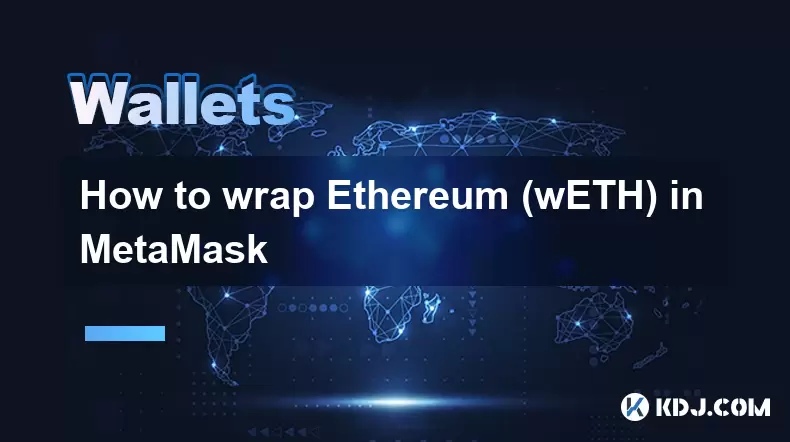
How to wrap Ethereum (wETH) in MetaMask
Aug 13,2025 at 11:36am
Understanding Wrapped Ethereum (wETH)Wrapped Ethereum (wETH) is a tokenized version of native Ethereum (ETH) that conforms to the ERC-20 standard, ena...

How to manage your portfolio in Exodus wallet
Aug 08,2025 at 10:07pm
Understanding the Exodus Wallet InterfaceThe Exodus wallet is a non-custodial cryptocurrency wallet that supports a wide range of digital assets. When...
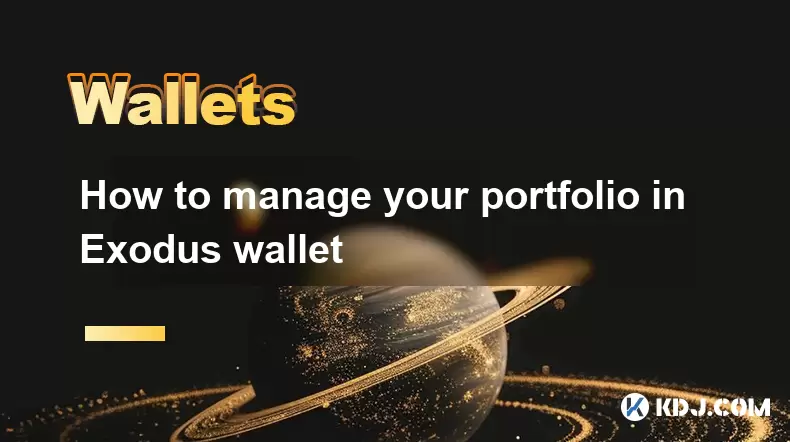
How to manage your portfolio in Exodus wallet
Aug 13,2025 at 11:35am
Understanding the Exodus Wallet InterfaceThe Exodus wallet is a non-custodial cryptocurrency wallet that supports a wide range of digital assets. Upon...

How to reset your MetaMask password
Aug 08,2025 at 01:28pm
Understanding the MetaMask Password Reset ProcessMany users confuse the MetaMask password with the seed phrase or private key, but they serve differen...
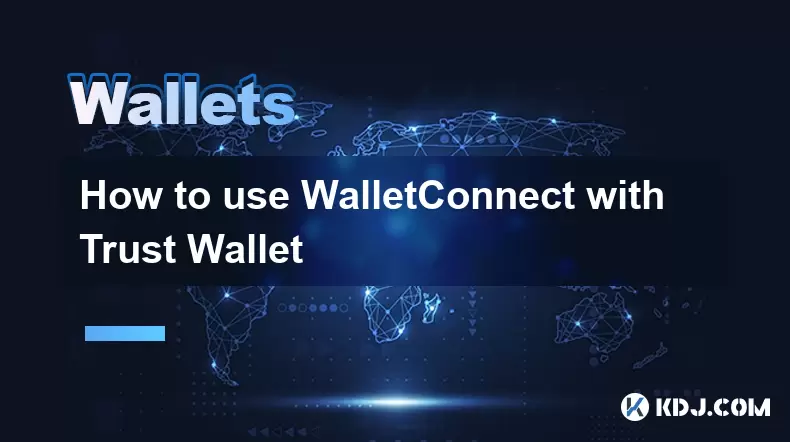
How to use WalletConnect with Trust Wallet
Aug 13,2025 at 01:07am
What Is WalletConnect and Why It Matters for Trust Wallet UsersWalletConnect is an open-source protocol that enables secure communication between dece...
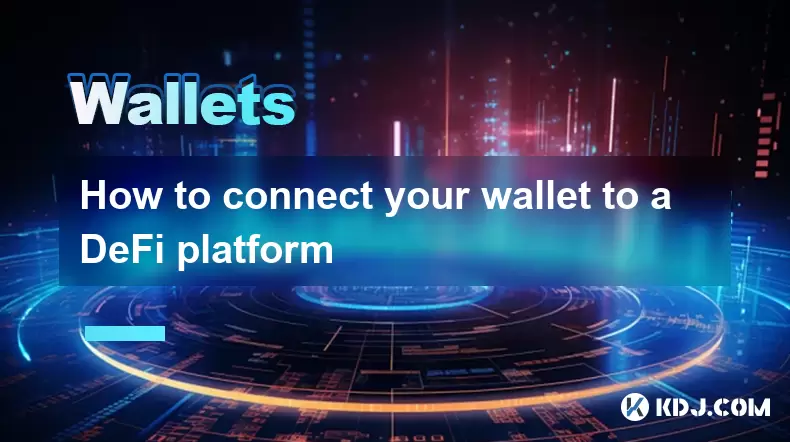
How to connect your wallet to a DeFi platform
Aug 13,2025 at 11:36am
Understanding Wallet Compatibility with DeFi PlatformsBefore connecting your wallet to any DeFi platform, it's essential to ensure your wallet is comp...

How to wrap Ethereum (wETH) in MetaMask
Aug 13,2025 at 11:36am
Understanding Wrapped Ethereum (wETH)Wrapped Ethereum (wETH) is a tokenized version of native Ethereum (ETH) that conforms to the ERC-20 standard, ena...

How to manage your portfolio in Exodus wallet
Aug 08,2025 at 10:07pm
Understanding the Exodus Wallet InterfaceThe Exodus wallet is a non-custodial cryptocurrency wallet that supports a wide range of digital assets. When...

How to manage your portfolio in Exodus wallet
Aug 13,2025 at 11:35am
Understanding the Exodus Wallet InterfaceThe Exodus wallet is a non-custodial cryptocurrency wallet that supports a wide range of digital assets. Upon...

How to reset your MetaMask password
Aug 08,2025 at 01:28pm
Understanding the MetaMask Password Reset ProcessMany users confuse the MetaMask password with the seed phrase or private key, but they serve differen...

How to use WalletConnect with Trust Wallet
Aug 13,2025 at 01:07am
What Is WalletConnect and Why It Matters for Trust Wallet UsersWalletConnect is an open-source protocol that enables secure communication between dece...

How to connect your wallet to a DeFi platform
Aug 13,2025 at 11:36am
Understanding Wallet Compatibility with DeFi PlatformsBefore connecting your wallet to any DeFi platform, it's essential to ensure your wallet is comp...
See all articles

























































































